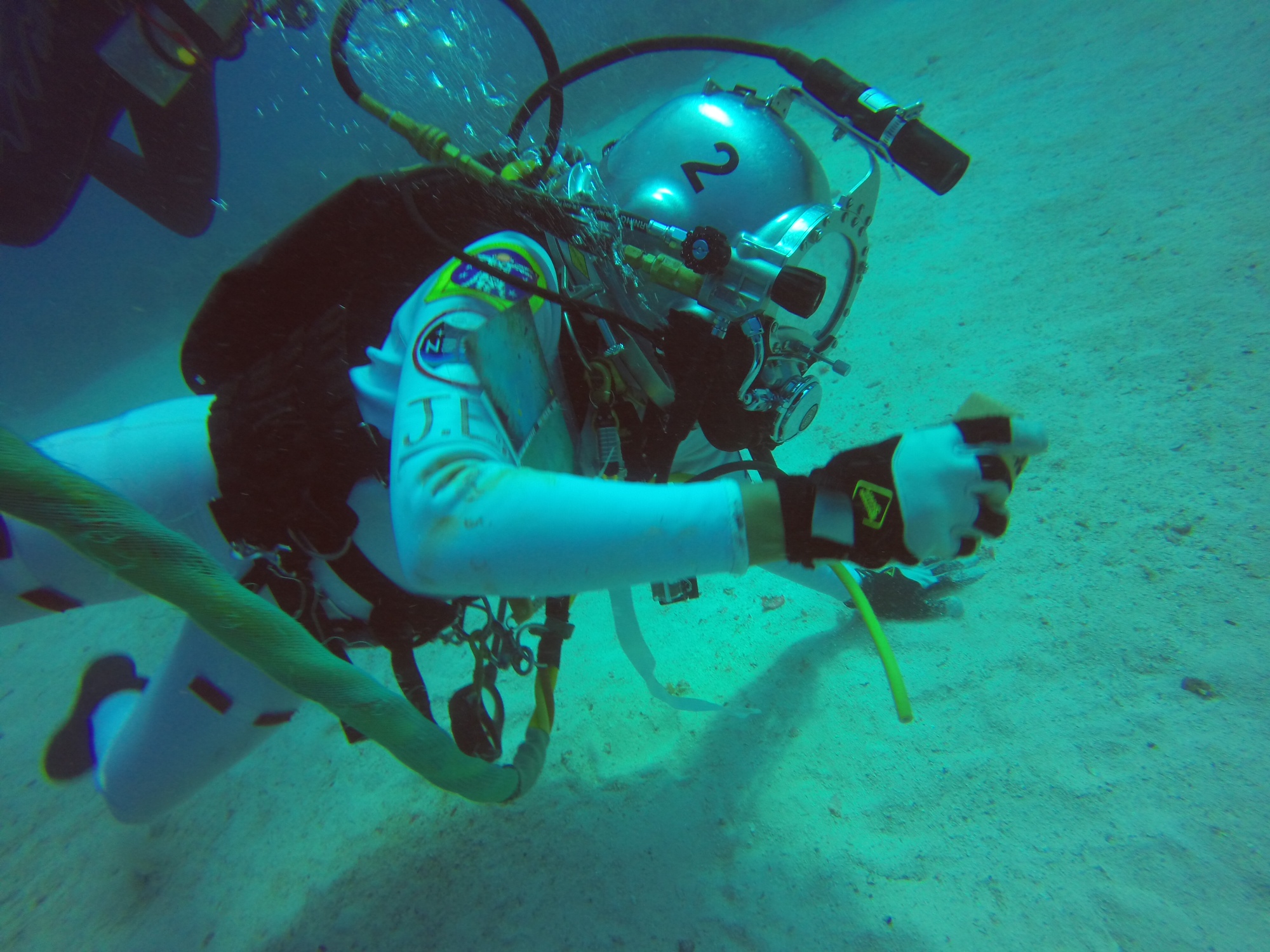Four astronauts splashed up from the depths of the Atlantic Ocean on July 29, bringing to a successful close the 18th NASA Extreme Environment Mission Operations (NEEMO) expedition. “Splashup” took place at 11:40 a.m. EDT Tuesday.
Accompanied by two lab technicians, the crew, commander Akihiko Hoshide of the Japan Aerospace Exploration Agency, NASA’s Jeanette Epps and Mark Vande Hei, and Thomas Pesquet from the European Space Agency, spent nine days living and conducting research 62 feet below the surface in Florida International University’s Aquarius Reef Base undersea research habitat off the coast of Key Largo, Fla. They investigated tools, techniques and technologies that will benefit spacefarers aboard future International Space Station and long-duration exploration missions.
The mission’s scientific investigations focused on a suite of studies from NASA’s Human Research Program covering behavioral health and performance, human health and countermeasures, and human factors and habitability. These studies examined such issues as team cohesion and the ability of crew members to perform tasks while working under constraining factors including isolation, confinement, remoteness, circadian rhythm disruption, communication delays and work overload.
“NEEMO is about working and living together,” Hoshide said. “Not just the six aquanauts inside the habitat, but also with the entire team on the surface, the support divers, and the researchers. It is a great spaceflight analog in that aspect, too. Teamwork is the key to success, and we worked well. I am grateful to have worked with such professionals, who made my work as the NEEMO18 commander easy and enjoyable.”
NEEMO 18 extravehicular activities evaluated tools and techniques for exploration tasks across gravity fields ranging from asteroids, to the moons of Mars and Mars surface. Techniques to address re-planning of exploration operations to account for varying time delays in communications were addressed.
“NEEMO 18 was a fantastic opportunity for me to participate in the development of technologies and techniques for future exploration,” said Vande Hei. “That by itself would have been plenty, but on top of that I got to experience life in an environment that most of us don’t get to experience as well as enjoy the company of some fantastic teammates, both on the crew and in the ground control and support team.”
NEEMO 18 engineering studies included evaluating the use of Bluetooth technology to monitor each crew member’s heart rate. The successful outcome of this analysis will help address future upgrades to the existing suite of heart rate monitoring equipment aboard the space station.
The mission’s scientific and exploration objectives were completed.
The extreme environment of life undersea is as close to being in space as possible, thus making such missions excellent analogs for spaceflight. Parallels between life underwater and in space were drawn throughout the mission.
“I consider myself extremely lucky to have ‘flown’ this mission with such professional and talented crewmembers,” Pesquet said. “I learned so much by just watching them go about their busy schedule, solve complex tasks, think out-of-the-box. Our commander Aki also made a point of always linking what happened down here to what he experienced up there in space, and the parallels were constantly made, with invaluable knowledge passed on to the rest of the crew.”
For the crew members, the experience of living beneath the waves is something they will not soon forget. In Vande Hei’s words, “Personally, I’ll never forget the womb-like peace of being out of the habitat, diving, at night, lights off. The sparks of luminescence that occurred when I clapped my hands or the puffs of that luminescence that spontaneously occurred made it seem like I was on another planet.”
NASA will return to Aquarius on Sept. 7 for NEEMO 19, a seven-day mission.
NASA astronaut Randy Bresnik will command the second 2014 mission. He will be joined by Canadian Space Agency astronaut Jeremy Hansen, ESA astronaut Andreas Mogensen, and Herve Stevenin, ESA’s Head of Extravehicular Activity (EVA) Training at the European Astronaut Center in Cologne, Germany.
NEEMO 19 will focus on the evaluation of tele-mentoring operations for ESA. Telementoring is when a crew member is given instruction for a task by an expert who is located remotely but is virtually present via a video and voice connection.





























